-
 bitcoin
bitcoin $122288.232522 USD
0.16% -
 ethereum
ethereum $4480.662914 USD
-0.22% -
 xrp
xrp $2.962747 USD
-2.32% -
 tether
tether $1.000120 USD
-0.05% -
 bnb
bnb $1145.654223 USD
-2.07% -
 solana
solana $227.105217 USD
-1.67% -
 usd-coin
usd-coin $0.999548 USD
-0.02% -
 dogecoin
dogecoin $0.250875 USD
-2.04% -
 tron
tron $0.340654 USD
-0.49% -
 cardano
cardano $0.837968 USD
-2.52% -
 hyperliquid
hyperliquid $48.960449 USD
0.06% -
 chainlink
chainlink $22.049280 USD
-1.33% -
 ethena-usde
ethena-usde $1.000404 USD
0.02% -
 sui
sui $3.586212 USD
0.20% -
 avalanche
avalanche $29.894916 USD
-4.18%
What to do during an LST depeg event
An LST depeg occurs when the token's value deviates from its underlying asset, often due to market volatility or protocol risks, requiring close monitoring and strategic response.
Jul 20, 2025 at 04:57 pm
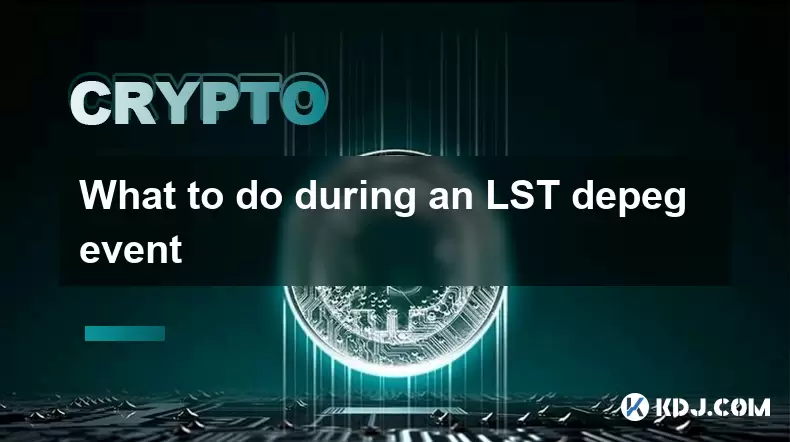
Understanding LST Depeg Events
An LST (Liquid Staking Token) depeg event occurs when the token, which is typically pegged to the value of the underlying asset (e.g., ETH), deviates significantly from its intended value. This deviation can happen due to various reasons, including market volatility, liquidity issues, or systemic risks within the staking protocol. Understanding the mechanics of LSTs is crucial to navigating such events effectively. LSTs represent a claim on staked assets and often accrue yield over time, making them popular among DeFi participants.
LSTs are designed to maintain a 1:1 peg with the native asset, but external market forces can cause temporary or prolonged deviations.
Monitoring Market Conditions
During an LST depeg, the first step is to closely monitor market conditions and protocol health. Key indicators to watch include the token's price relative to the underlying asset, trading volume, and any announcements from the protocol team. Real-time tracking tools and decentralized exchanges should be used to observe price movements and potential arbitrage opportunities.
- Check price feeds on platforms like Dune Analytics or CoinGecko
- Monitor social channels and governance forums for updates
- Review liquidity pools for slippage and depth
Timely information is critical, as delays can lead to missed opportunities or increased risk exposure.
Assessing Protocol Health and Security
An LST depeg may signal deeper issues within the protocol. It's essential to assess the health of the smart contracts, the reserve ratio, and whether the protocol has sufficient backing for the issued tokens. Reviewing on-chain data and audit reports can provide insight into whether the depeg is temporary or indicative of a more serious problem.
- Examine total value locked (TVL) and staking balances
- Review recent on-chain transactions for unusual activity
- Check if the protocol has emergency mechanisms in place
A drop in the backing ratio or unexpected withdrawals may indicate a systemic issue.
Executing Risk Mitigation Strategies
When an LST depegs, users must decide whether to hold, sell, or hedge their position. Hedging strategies like shorting the LST or using derivatives may help reduce exposure. Alternatively, users can unstake or swap the LST for the underlying asset if the protocol allows.
- Use decentralized exchanges to swap LSTs for stablecoins or native assets
- Consider using perpetual futures or options to hedge exposure
- Participate in arbitrage if the peg is expected to re-align
Each strategy carries its own set of risks and gas costs, which should be evaluated carefully.
Engaging in Community and Governance Actions
In many cases, LST protocols are governed by decentralized autonomous organizations (DAOs). During a depeg event, community coordination and governance proposals can play a pivotal role in stabilizing the token. Voting on emergency measures, liquidity incentives, or rebasing mechanisms may help restore the peg.
- Join governance calls and Discord/Telegram channels
- Vote on proposals aimed at stabilizing the peg
- Contribute liquidity to designated pools if incentives are favorable
Active participation can influence outcomes and potentially reduce losses for token holders.
Post-Event Evaluation and Recovery
After the depeg begins to stabilize or resolve, it's important to evaluate the impact on your portfolio and understand what went wrong. Reviewing transaction history, yield performance, and recovery timelines can help inform future decisions.
- Analyze impermanent loss or gains from arbitrage activities
- Track the time it took for the peg to re-anchor
- Assess the effectiveness of your chosen risk mitigation strategy
Learning from the event can improve future responses to similar market disruptions.
Frequently Asked Questions
Q: Can LST depegs be predicted?While certain indicators like declining liquidity or on-chain imbalances may hint at potential depeg risks, predicting exact timing or magnitude is difficult. Monitoring tools and community sentiment can offer early warnings but not certainty.
Q: Are all LSTs equally vulnerable to depeg events?No, different LST protocols have varying levels of decentralization, backing mechanisms, and governance structures. Some are more resilient due to over-collateralization or robust incentive models.
Q: What should I do if the LST does not re-peg?If the depeg persists, it may indicate a structural issue. Consider exiting the position, exploring alternative staking options, or participating in recovery governance proposals if available.
Q: How do LST depegs affect yield earnings?Yield continues to accrue in the form of additional LSTs or native assets, but a depeg reduces the real-world value of those earnings. Users should factor in the token's market price when evaluating net returns.
Disclaimer:info@kdj.com
The information provided is not trading advice. kdj.com does not assume any responsibility for any investments made based on the information provided in this article. Cryptocurrencies are highly volatile and it is highly recommended that you invest with caution after thorough research!
If you believe that the content used on this website infringes your copyright, please contact us immediately (info@kdj.com) and we will delete it promptly.
- BlockDAG, DOGE, HYPE Sponsorship: Crypto Trends Shaping 2025
- 2025-10-01 00:25:13
- Deutsche Börse and Circle: A StableCoin Adoption Powerhouse in Europe
- 2025-10-01 00:25:13
- BlockDAG's Presale Buzz: Is It the Crypto to Watch in October 2025?
- 2025-10-01 00:30:13
- Bitcoin, Crypto, and IQ: When Genius Meets Digital Gold?
- 2025-10-01 00:30:13
- Stablecoins, American Innovation, and Wallet Tokens: The Next Frontier
- 2025-10-01 00:35:12
- NBU, Coins, and Crypto in Ukraine: A New Yorker's Take
- 2025-10-01 00:45:14
Related knowledge
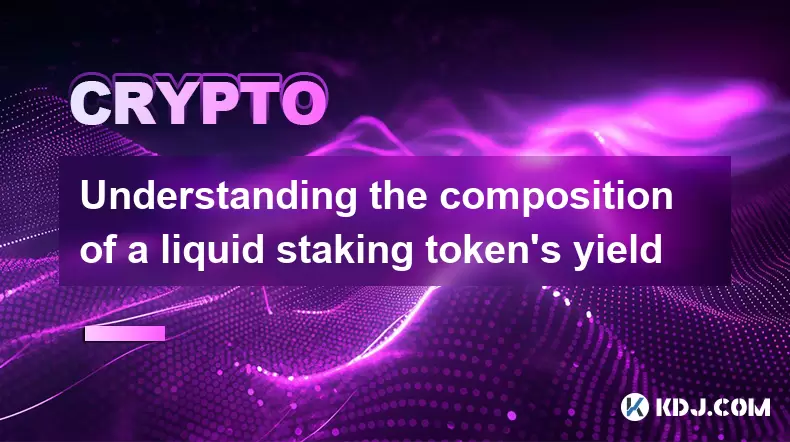
Understanding the composition of a liquid staking token's yield
Jul 20,2025 at 09:07am
What Is a Liquid Staking Token?A liquid staking token is a representative asset issued to users who stake their native cryptocurrency on a proof-of-st...
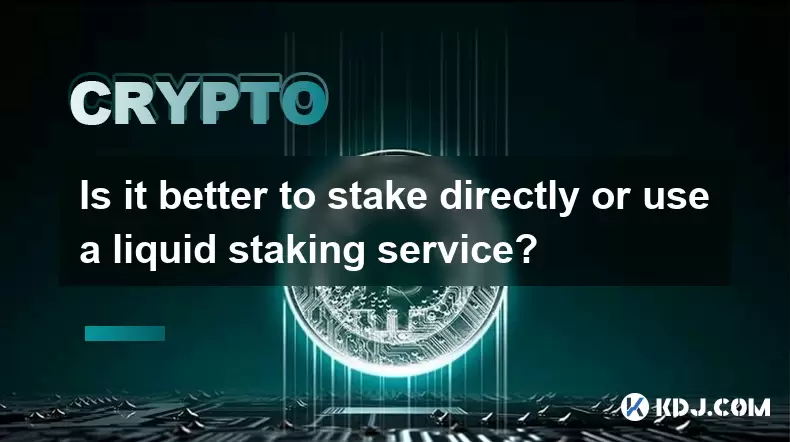
Is it better to stake directly or use a liquid staking service?
Jul 22,2025 at 08:21pm
Understanding the Basics of StakingStaking in the context of blockchain and cryptocurrency refers to the process of locking up digital assets to suppo...

What to do during an LST depeg event
Jul 20,2025 at 04:57pm
Understanding LST Depeg EventsAn LST (Liquid Staking Token) depeg event occurs when the token, which is typically pegged to the value of the underlyin...
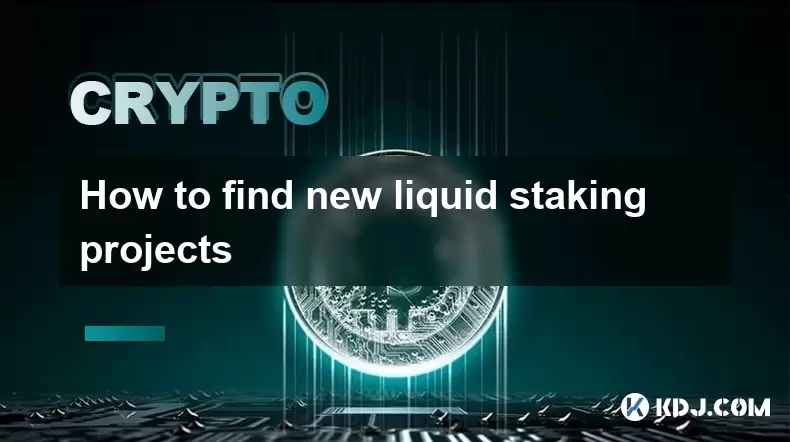
How to find new liquid staking projects
Jul 30,2025 at 01:14pm
Understanding Liquid Staking and Its ImportanceLiquid staking is a mechanism that allows users to stake their cryptocurrency assets while still mainta...
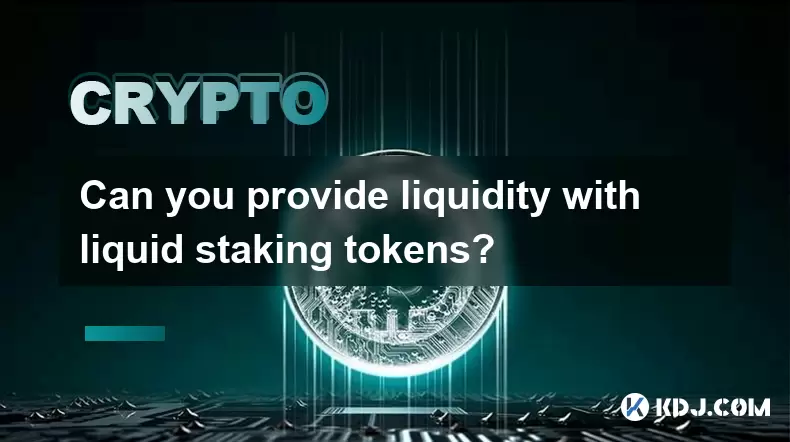
Can you provide liquidity with liquid staking tokens?
Jul 22,2025 at 10:22am
Understanding Liquid Staking TokensLiquid staking tokens (LSTs) are derivative tokens that represent staked assets on a proof-of-stake (PoS) blockchai...
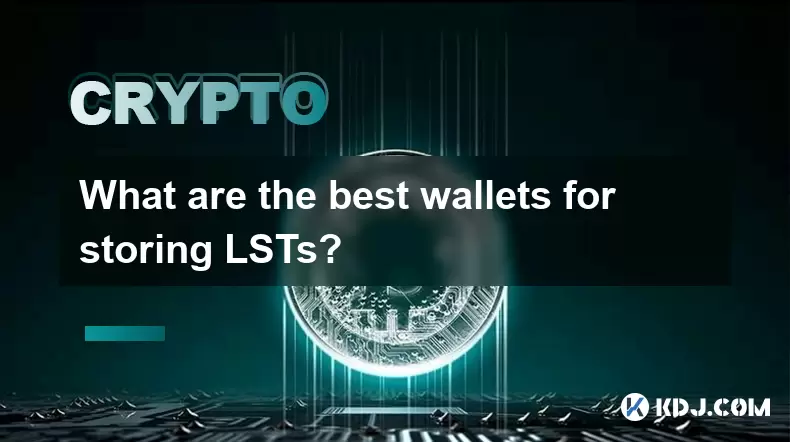
What are the best wallets for storing LSTs?
Jul 21,2025 at 03:14pm
Understanding LSTs and the Need for Secure StorageLSTs, or Liquid Staking Tokens, are derivative tokens representing staked assets on a blockchain. Wh...

Understanding the composition of a liquid staking token's yield
Jul 20,2025 at 09:07am
What Is a Liquid Staking Token?A liquid staking token is a representative asset issued to users who stake their native cryptocurrency on a proof-of-st...

Is it better to stake directly or use a liquid staking service?
Jul 22,2025 at 08:21pm
Understanding the Basics of StakingStaking in the context of blockchain and cryptocurrency refers to the process of locking up digital assets to suppo...

What to do during an LST depeg event
Jul 20,2025 at 04:57pm
Understanding LST Depeg EventsAn LST (Liquid Staking Token) depeg event occurs when the token, which is typically pegged to the value of the underlyin...

How to find new liquid staking projects
Jul 30,2025 at 01:14pm
Understanding Liquid Staking and Its ImportanceLiquid staking is a mechanism that allows users to stake their cryptocurrency assets while still mainta...

Can you provide liquidity with liquid staking tokens?
Jul 22,2025 at 10:22am
Understanding Liquid Staking TokensLiquid staking tokens (LSTs) are derivative tokens that represent staked assets on a proof-of-stake (PoS) blockchai...

What are the best wallets for storing LSTs?
Jul 21,2025 at 03:14pm
Understanding LSTs and the Need for Secure StorageLSTs, or Liquid Staking Tokens, are derivative tokens representing staked assets on a blockchain. Wh...
See all articles










































































